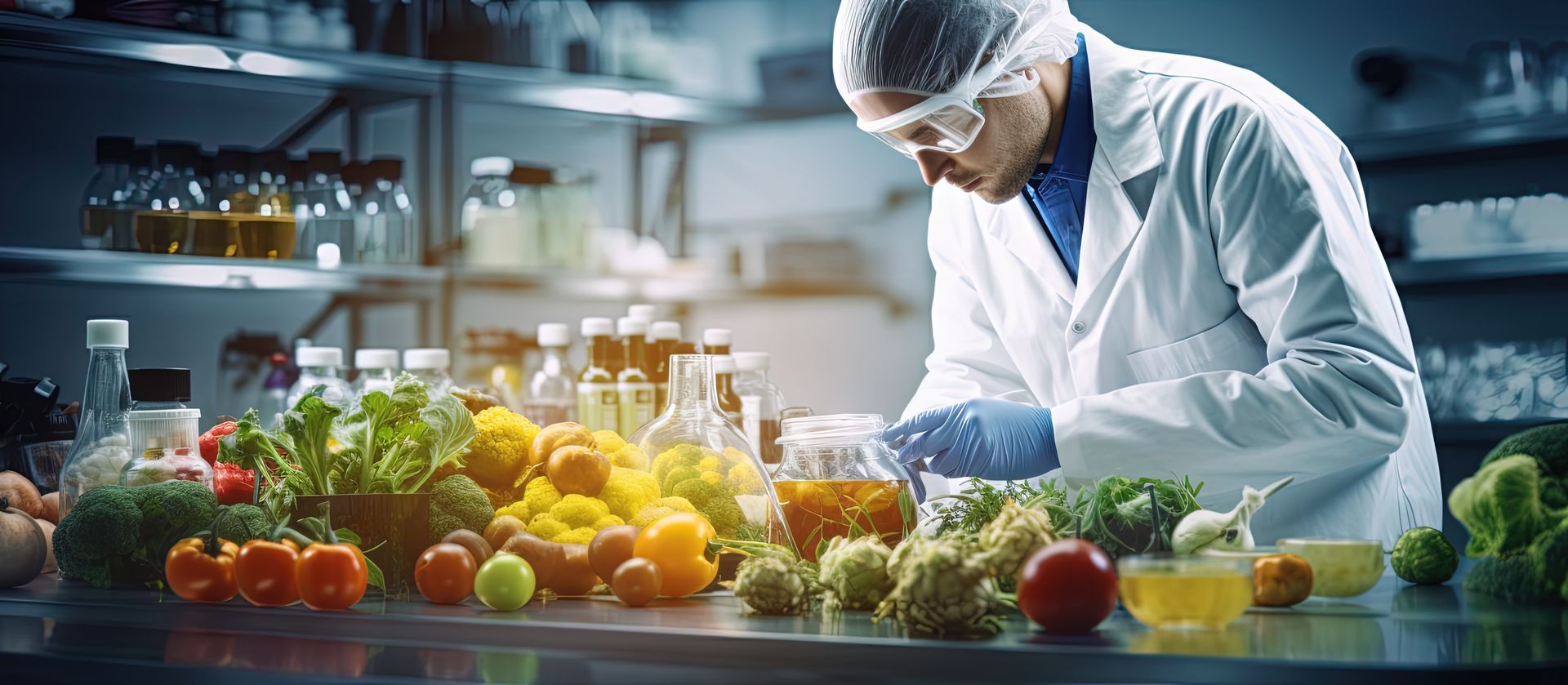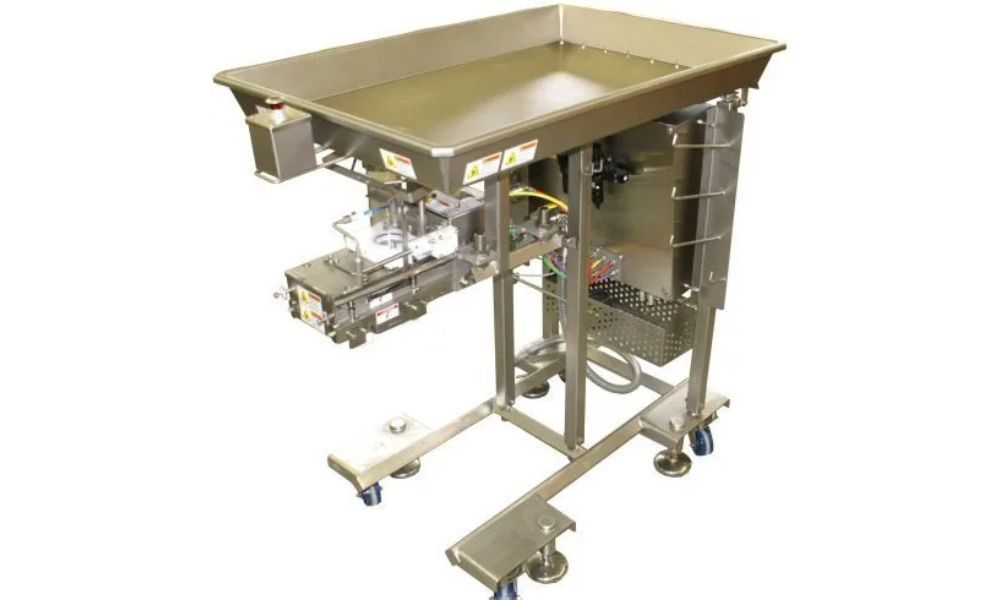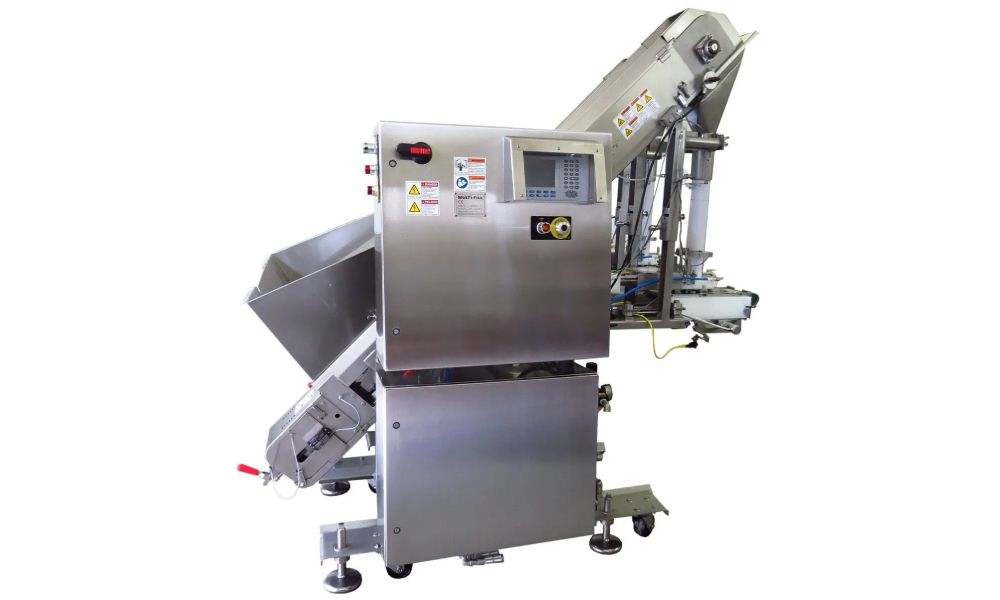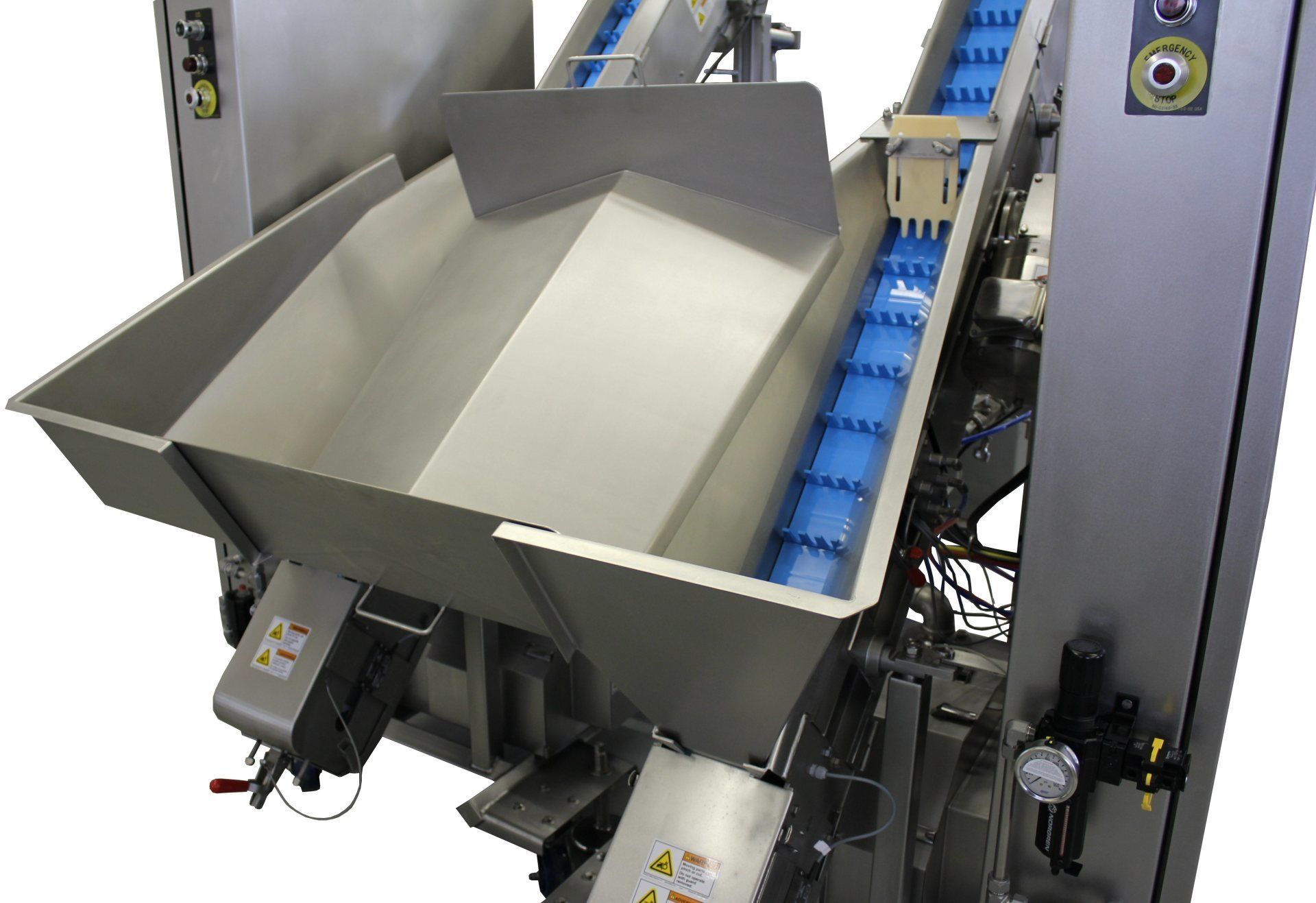In this article, we explore the crucial role of Current Good Manufacturing Practices (cGMP) in ensuring food safety and preventing foodborne illnesses. We'll delve into the significance of hazard analysis and critical control points (HACCP) and how they contribute to mitigating risks. Additionally, we'll discuss the role of Hazard Analysis and Risk-based Preventative Controls (HARPC) in enhancing food safety measures.
This is the first in a series of articles on Good Manufacturing Processes in Food Processing.
In this article:
- Understanding the Importance of cGMP in Food Packaging
- How Hazard Analysis and Critical Control Points (HACCP) Prevent Foodborne Illness
- The Role of Hazard Analysis and Risk-based Preventative Controls (HARPC) in Food Safety
- Critical Control Points in Food Packaging
- The Intersection of cGMP, HACCP, and HARPC in Food Safety
Understanding the Importance of cGMP in Food Packaging

Current Good Manufacturing Practices (or cGMP) are a vital component of the food industry, serving as a cornerstone for ensuring food safety and preventing foodborne illnesses. They encompass a comprehensive set of guidelines and regulations that govern the manufacturing and packaging processes. By adhering to cGMP, companies can establish and maintain high standards of quality, safety, and hygiene throughout the production and distribution of food products.
The goal of cGMP is that food products are manufactured and packaged in a way that minimizes the risk of contamination and keeps them safe to eat. cGMP covers the entire production process, including facility design, equipment maintenance, personnel training, and documentation procedures. By implementing and following cGMP guidelines, companies can create processes to lower risks and make their food products safer.
Maintaining a clean and hygienic environment is a crucial principle of cGMP. This means regularly cleaning and sanitizing production areas, equipment, and utensils to prevent the spread of germs and the growth of harmful bacteria. cGMP also emphasizes the significance of proper personal hygiene practices among employees, like washing hands and wearing protective gear, to minimize the risk of introducing contaminants into the food processing environment.

Maintaining a clean and hygienic environment is a crucial principle of cGMP
In addition, cGMP requires companies to establish and document standard operating procedures (SOPs) for different manufacturing and packaging processes. These SOPs serve as a guide for employees, ensuring consistent and standardized practices that comply with food safety regulations. By having well-defined procedures in place, companies can reduce the chances of errors or deviations that could compromise the safety and quality of the food products.
Compliance with cGMP is not only essential for meeting regulatory requirements, but it also plays a crucial role in maintaining consumer trust and confidence. Consumers expect the food they purchase to be high quality and safe. By adhering to cGMP, companies demonstrate their commitment to producing food products that are safe and reliable. This commitment helps protect public health and prevent foodborne illnesses.
Next, read about how you can use HACCP to keep your product safe and fresh.
How Hazard Analysis and Critical Control Points (HACCP) Prevent Foodborne Illness
Hazard Analysis and Critical Control Points (HACCP) is a systematic and proactive approach employed in the food industry to identify and mitigate potential hazards that could result in foodborne illnesses. This method involves a thorough analysis of food production processes, identification of critical control points, and the implementation of measures to prevent, eliminate, or reduce the identified hazards to an acceptable level. By applying HACCP principles, food manufacturers can ensure the safety and quality of their products, protecting consumers from the risks associated with contaminated or unsafe food.

The HACCP system consists of seven core principles that guide its implementation:
1: Hazard Analysis. The first principle involves conducting a hazard analysis. A strong analysis includes identifying and assessing potential biological, chemical, and physical hazards that could occur at each stage of the food production process. This analysis allows for a comprehensive understanding of the risks involved and serves as the foundation for subsequent control measures.
2: Determine CCPs. Once hazards are identified, the second principle focuses on determining critical control points (CCPs). These are specific points in the production process where control measures can be applied to prevent, eliminate, or reduce hazards to an acceptable level. CCPs may include steps such as cooking, cooling, storage, or packaging, where precise monitoring and control are necessary to ensure food safety.
3: Establish Critical Limits. The third principle involves establishing critical limits for each CCP. These limits are measurable criteria that define the maximum or minimum values for factors such as time, temperature, pH, or moisture, which must be met to ensure the control measures are effective.
4: Monitor CCPs. Monitoring procedures are then implemented as the fourth principle, ensuring that CCPs are continuously observed and measured to verify that critical limits are being met.
5: Corrective Actions.
The fifth principle focuses on corrective actions. If monitoring reveals that a CCP is not under control or critical limits are not being met, immediate corrective actions must be taken to prevent unsafe food from entering the market. These actions may include adjusting processes, reevaluating procedures, or implementing additional control measures.
6: Establish Procedures.
To facilitate effective implementation, the sixth principle emphasizes the importance of establishing procedures for verifying the HACCP system's overall effectiveness. This involves regular evaluations, reviews, and audits to ensure that the system is functioning correctly and that hazards are being adequately controlled.
7: Documentation and Record Keeping.
Lastly, documentation and record-keeping form the seventh principle of HACCP. Detailed records of the HACCP plan, monitoring results, corrective actions, and verification activities are maintained to demonstrate compliance with food safety regulations and to provide evidence of the system's effectiveness.
By applying the HACCP system, food manufacturers can identify and control potential hazards at critical points in the production process. This proactive approach minimizes the risk of foodborne illnesses, ensuring the safety and quality of food products. HACCP serves as a robust framework for maintaining consumer confidence and protecting public health.
Next, read about how HARPC can keep your factory line clean and efficient.
The Role of Hazard Analysis and Risk-based Preventative Controls (HARPC) in Food Safety
Hazard Analysis and Risk-based Preventative Controls (HARPC) is an advanced food safety system that emphasizes proactive measures to prevent hazards rather than reactive responses. HARPC builds upon the principles of Hazard Analysis and Critical Control Points (HACCP) by conducting a thorough analysis of potential hazards, assessing the risks involved, and implementing preventive controls to mitigate those risks. This approach enables companies to proactively identify and address potential food safety issues before they pose a threat.
HARPC takes a comprehensive approach to food safety by considering a wider range of hazards, including chemical, physical, and biological risks. It involves a systematic evaluation of the entire food production process, from sourcing raw materials to the final distribution of finished products. By conducting a thorough hazard analysis, companies can identify potential sources of contamination or other hazards that may compromise food safety.

Once hazards are identified, the next step in HARPC is to assess the associated risks. This involves evaluating the likelihood and severity of each hazard occurring and the potential impact it could have on public health. By understanding the risks involved, companies can prioritize their preventive control measures and allocate resources effectively.
The core principle of HARPC is implementing preventive controls to minimize or eliminate identified risks. They can include process controls (such as temperature monitoring or sanitation procedures), allergen controls, supplier verification, and employee training. Following these guidelines companies can significantly reduce the likelihood of food safety incidents and protect consumers from potential harm.
HARPC also emphasizes the importance of monitoring and verification activities to ensure the effectiveness of preventive controls. Regular monitoring allows companies to track critical control points and identify any deviations from established standards. Verification activities involve periodic reviews, audits, and testing to confirm that preventive controls are functioning as intended.
HARPC helps companies take a proactive approach to food safety by identifying and addressing potential hazards before they become a threat. This comprehensive and risk-based approach enhances consumer protection and helps to maintain the integrity of the food supply chain. HARPC serves as a valuable tool for companies to meet regulatory requirements, safeguard public health, and build consumer trust in the safety and quality of their food products.
The next section looks at packaging your food and best practices to protect your product and your consumers.
Critical Control Points in Food Packaging
Critical Control Points (CCPs) play a major role in food packaging safety. One way they do this is through things like automatic counting machines. Using such machines is a strategy that minimizes human contact with the product while increasing precision. This reduces the risk of contamination through human error or handling. Similarly, manual counting devices, while they involve human interaction, can be equipped with safeguards such as gloves and sanitizing protocols to maintain hygiene standards.

Automatic filling machines represent another CCP, where the accuracy and cleanliness of the filling process are critical. These machines need to be regularly calibrated and sanitized to prevent the introduction of foreign substances or microorganisms that could compromise the food's safety. The use of high-efficiency particulate air (HEPA) filters and ultraviolet (UV) light treatments within the packaging environment can further bolster the defense against contaminants.
By implementing strict control measures at these critical points, companies can effectively minimize the risk of contamination. By leveraging technology and implementing robust control measures, food packaging companies can deliver products that meet the highest standards of safety and quality.
The Intersection of cGMP, HACCP, and HARPC in Food Safety
When it comes to keeping your food product safe, there's a lot that goes on behind the scenes. Three big players in the food safety game are cGMP, HACCP, and HARPC. By bringing these three components together, you can create a strong defense against foodborne illnesses. This integrated approach means always thinking ahead, not just waiting for something bad to happen, but actively working to prevent it.
And that's how your customers get to enjoy your meals without worrying about getting sick.
Ready to make work easier for your staff with our filling machines? Contact Multi-Fill today to explore how our cutting-edge filling machines can optimize your product packaging processes, increase efficiency, and elevate your business.
This is the first in a series of articles on cGMP. Read the others here:
Delving into cGMP: Its Crucial Role in Food Packaging and Safety
Harmonizing cGMP, HACCP, and HARPC in Food Line Safety
Designing a food filling line: Product is king












